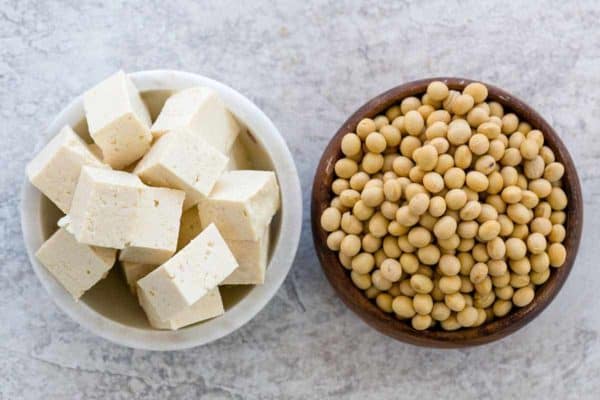How tofu is made?
Look into any modern day tofu factory, and you will see the shiny gleam of machinery that is needed to produce tofu on a scale for mass consumption. Nevertheless, the principles of how tofu is made have remained intact over hundreds of years, and the process is so simple that you could make a batch even in the comfort of your own home.
For anyone used to eating tofu regularly, it’s common knowledge that there really isn’t just one way to eat tofu or even one type of tofu to choose from. Its unassuming form disguises a nutritional punch since the soy protein in tofu is considered a complete protein—meaning it contains all nine essential amino acids that are not made by the human body. This is why tofu is a staple for many seeking a plant-based alternative to animal protein.

As tofu is a soybean curd, the process of making it is comparable to how cheese is made, and it consists of 3 main stages:
- Preparation of soybeans,
- Coagulation of soy juice to form curds, and
- Pressing curds to form tofu cakes
STEP 1. PREPARING SOYBEANS FOR ‘MILKING’

Soybeans and their ‘milk’ are the very essence of tofu, which is why the first step is crucial to the quality of the final result. Tofu makers begin with soaking the soybeans for anywhere between 4 to 10 hours to soften the beans before grinding them into a soy slurry. Traditionally, this process of extracting soy juice would be done using hand-operated grinding stones called querns, but these days sophisticated machinery is the norm for efficiently grinding juice out of a large quantity of soybeans. Next, the soy slurry is boiled to a temperature between 100℃ and 110℃ for 3-10 minutes to reduce the intensity of the juice’s beany flavour, and any foam is skimmed off the top while the remaining solid pulp—known as okara in Japanese—is filtered out from the liquid.
Fun Fact: An enzyme in soy protein called lipoxygenase is responsible for the “beany” flavour of soy products. Boiling soybeans inactivates this enzyme and produces a blander tofu, but in East Asia where a stronger beany taste in tofu is preferred, soybeans are often ground cold to retain lipoxygenase and the flavour compounds it helps produce.4
STEP 2. COAGULATING THE SOY ‘MILK’

Coagulation is a key step in tofu making, as the type of coagulant used—typically salts or acids—will influence the texture and firmness of the tofu at the end. For firmer kinds of tofu, tasteless salts like calcium sulphate and magnesium chloride are often employed; whereas edible acids such as glucono delta-lactone (GDL) are preferred for rapid coagulation that produces a smoother tofu with a more silken texture. When the coagulant is added to the filtered soy juice, the protein and oil that is suspended in the liquid will clump together to form curds. However, the coagulation process can be affected by many factors including the variety of soybeans used and its protein percentage as well as the temperature when cooking or coagulating the soy ‘milk’.
Fun Fact: Okara is a by-product of making soy ‘milk’ and tofu that is sometimes used as livestock feed or fertiliser for crops, but it can also be used in cooking as it is a high quality source of protein and minerals such as potassium, calcium, and niacin.
STEP 3. PRESSING SOY CURDS

Before tofu is shaped into the familiar white blocks you get in store, the soy curds are usually broken up by stirring or mixing. The resulting curd mixture is then pressed in layers of cheesecloth under a hydraulic press to release its whey liquid and form the final tofu texture. Generally speaking, the higher the pressure, the firmer the resulting tofu. Pressed tofu is then ready to be cut into pieces and further processed to add flavourings if desired. Soft tofu does not go through any pressing, and is instead coagulated directly in its final packaging.
These are just the basics of how tofu is made, and they can easily be replicated on a smaller scale in your own kitchen—so just look for one of the many recipes online and get started!







